April 22, 2024

Getty Images photo
Dear members of the Hajim School community,
Researchers from the Center for Visual Science, the Institute of Optics, and the Flaum Eye Institute have made intriguing progress answering questions about how the eye’s three cone photoreceptor types work together to allow humans to perceive color. A new study in the Journal of Neuroscience shares how our scientists used adaptive optics to identify rare retinal ganglion cells that could help fill in the gaps in existing theories of color perception.
The study builds upon work in the 1980s by David Williams, the William G. Allyn Professor of Medical Optics, to help map the “cardinal directions” that explain color detection. The newly found cells help explain differences in the way the eye detects color and how color appears to humans.
“Humans have more than 20 ganglion cells and our models of human vision are only based on three,” says Sara Patterson, a postdoctoral researcher at the Center for Visual Science who led the study. “There’s so much going on in the retina that we don’t know about. This is one of the rare areas where engineering has totally outpaced visual basic science.”
Read more about the study at the News Center.
RIP COLLINS NAMED AAAS FELLOW
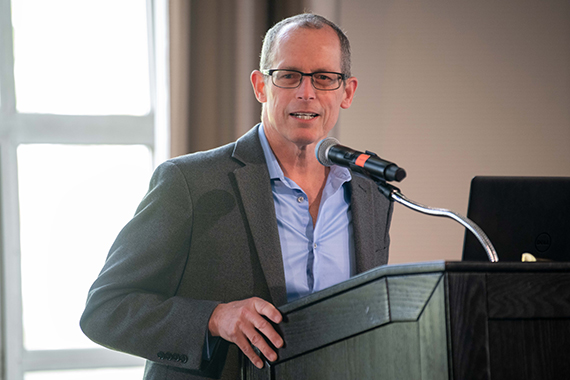
University of Rochester photo / Jacob Deats
Congratulations to Rip Collins, who was named among the 2023 class of American Association for the Advancement of Science (AAAS) Fellows, a distinguished lifetime honor within the scientific community. Rip, the Tracy Hyde Harris Professor of Mechanical Engineering, a professor of physics and astronomy, and associate director of science, technology, and academics at the Laboratory for Laser Energetics (LLE), is one of 502 scientists, engineers, and innovators in this class of fellows.
Rip was recognized by AAAS “for distinguished contributions to Condensed Matter Physics, particularly for his seminal groundbreaking work in high energy density science of matter at extreme pressures.” Rip is director of the Center for Matter at Atomic Pressures (CMAP), a National Science Foundation (NSF) Physics Frontier Center hosted at the University. He also leads the Institute for Matter at Extreme Energy Density (IMAXED), which studies fundamental and applied high-energy-density physics, including undergraduate and graduate coursework and experimental and theoretical research.
Read more about Rip and the other two University of Rochester faculty inducted into this year’s class of AAAS fellows at the News Center.
JULIE BENTLEY SHARES LESSONS IN LENS DESIGN FROM RUDOLF KINGSLAKE
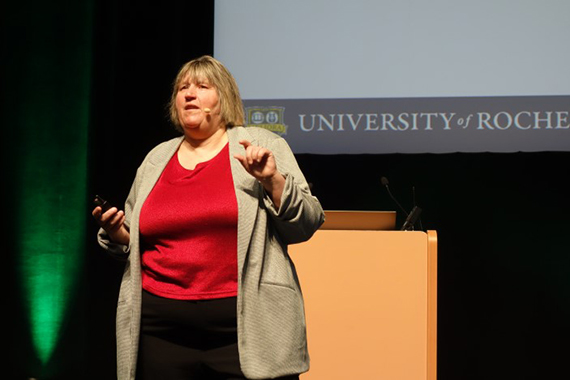
Optics.org photo / Matthew Peach
Professor Julie Bentley recently shared important insight about teaching optical engineering in the era of high-powered computing by leveraging ideas from Rudolf Kingslake, the English academic, lens designer, and engineer who founded the Institute of Optics. Julie gave a plenary talk at the SPIE Optical Systems Design conference earlier this month titled, “Lessons in lens design from Rudolf Kingslake: in the modern computing era can we learn anything new from the past?”
She noted how Kingslake championed the importance of teaching lens design fundamentals to complement computer-aided design. His work serves as guidance as she grapples with questions like how much to teach fundamentals when students have access to powerful computational tools like global optimization and AI.
Read more about how she strikes a balance and how she incorporated a collection of 171 lens design exam problems written by Kingslake in her class.
REVERSE-ENGINEERING DAUB IN BERMUDA
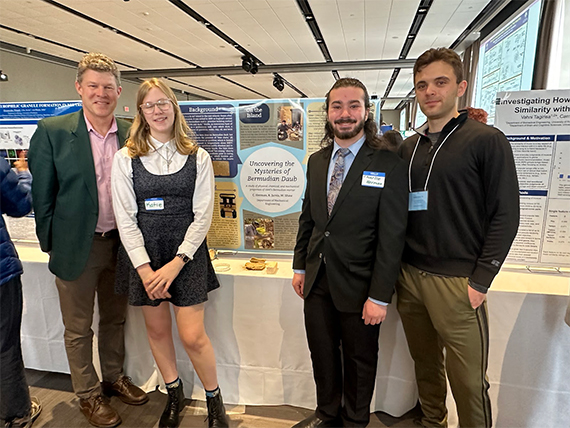
Mechanical engineering students have been helping Professor Michael Jarvis from the Department of History explore the physical, chemical, and mechanical properties of Bermudian daub, a mortar that was used in the 1600s. In March, Charlie Herman ’25, and Will Shaw ’25 traveled with Michael to Bermuda to collect samples, talk to local experts, and see historic towns and dig sites.
Now that they better understand how the building material was made, it can help with restoration efforts of 17th century buildings in the region. The students presented the research along with their co-PI Katie Jarvis ’25 at the Undergraduate Research Expo. Read more on Michael’s website about the Smith’s Island Archaeology Project.
REGISTER FOR OPTICS SUMMER SHORT COURSES
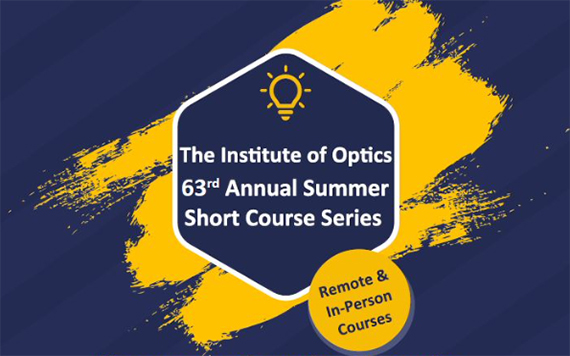
The Institute of Optics will offer its 63rd annual summer school short-course series, offering a mix of one-week courses and two-and-a-half-day courses from June 3-June 21, 2024. The courses, offered remotely and in-person, provide industry professionals, graduate students, alumni, and high school teachers an opportunity to keep current with the latest advances in the optics and photonics fields. Topics include integrated photonics circuits, optical system design, laser engineering, and more.
Learn more at the Institute of Optics website.
HELP SHAPE THE FUTURE OF ROCHESTER’S CAMPUS
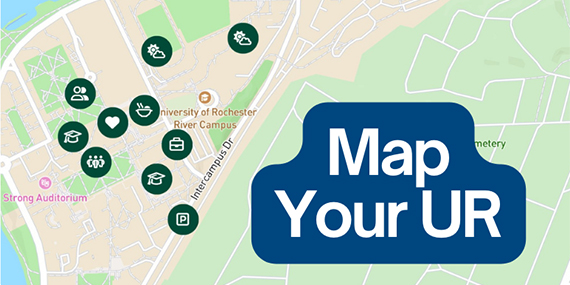
The University is seeking input on two initiatives to help shape the campus’s future.
- Use a new, online mapping tool to share how you navigate and experience our campuses. Take a few minutes to map your routes, favorite eating stops, where you study and socialize, or any areas that you use every day. Your responses will remain anonymous, but the data will be incorporated into the University’s master planning process set to launch later this spring.
- Participate in a survey about your experiences with transportation and on campus parking. Feedback is anonymous and will be instrumental in developing a transportation and parking blueprint for the next decade and beyond. Complete the survey through May 6, and you will also be entered into a drawing with a chance to win a $50, $100, or $150 Amazon gift card.
Thanks for providing feedback that will help shape the University’s future academics, facilities, and community relationships.
ORDER OF THE ENGINEER
Class of ’24 Hajim students in ABET accredited are invited to participate in the induction of new engineers into the Meliora Link of the Order of the Engineer. This rite of passage for engineers gives a visible means for graduates to identify with other engineers in an honor society that does not charge dues and never holds meetings except the induction.
This year’s ceremony will be held on Thursday, May 16, at 1:30 p.m. in Strong Auditorium. To be inducted, please see your department’s undergraduate program coordinator or the Hajim Dean’s Office in Lattimore 301. Those interested must order a ring and pay the $10 fee by no later than Friday, April 26 (cash only, please). The fee covers the cost of the ring and the certificate. Students must attend the ceremony in order to be inducted and the ring size is needed. Learn more on the Hajim commencement page.
SEED FUNDING FOR NEW TRANSDISCIPLINARY CENTERS AND INSTITUTES
A key pillar of the Boundless Possibility strategic plan is that the University aims to launch five new transdisciplinary centers or institutes aimed at supporting scholarship in areas that will bring the University even more distinction and reputation. The University launched a planning funding competition in which teams of scholars from multiple units across the institution proposed ideas for new centers and institutes.
Out of the 42 outstanding submissions received, ten were chosen to receive seed funding to support one year of developing what they think will be the best prospect for the University to advance its scholarly prominence. I’m pleased to share that Hajim School faculty are leading or co-leading six of these new initiatives. Hajim-related projects and leaders include:
It is expected that one or more of these centers or institutes will be awarded larger-scale funding beginning in the 2025-2026 academic year. Thank you to all who applied and best of luck to those selected moving forward. See a full list of projects and collaborators on the Provost’s website.
Have a great week!
Your dean,
Wendi Heinzelman